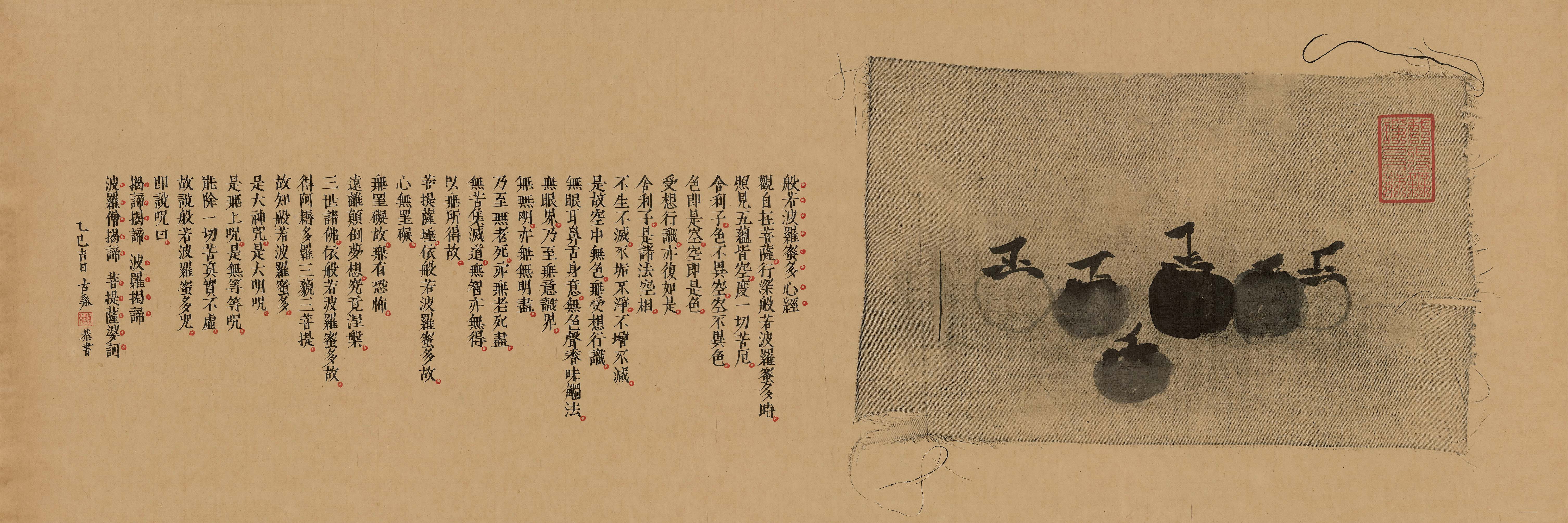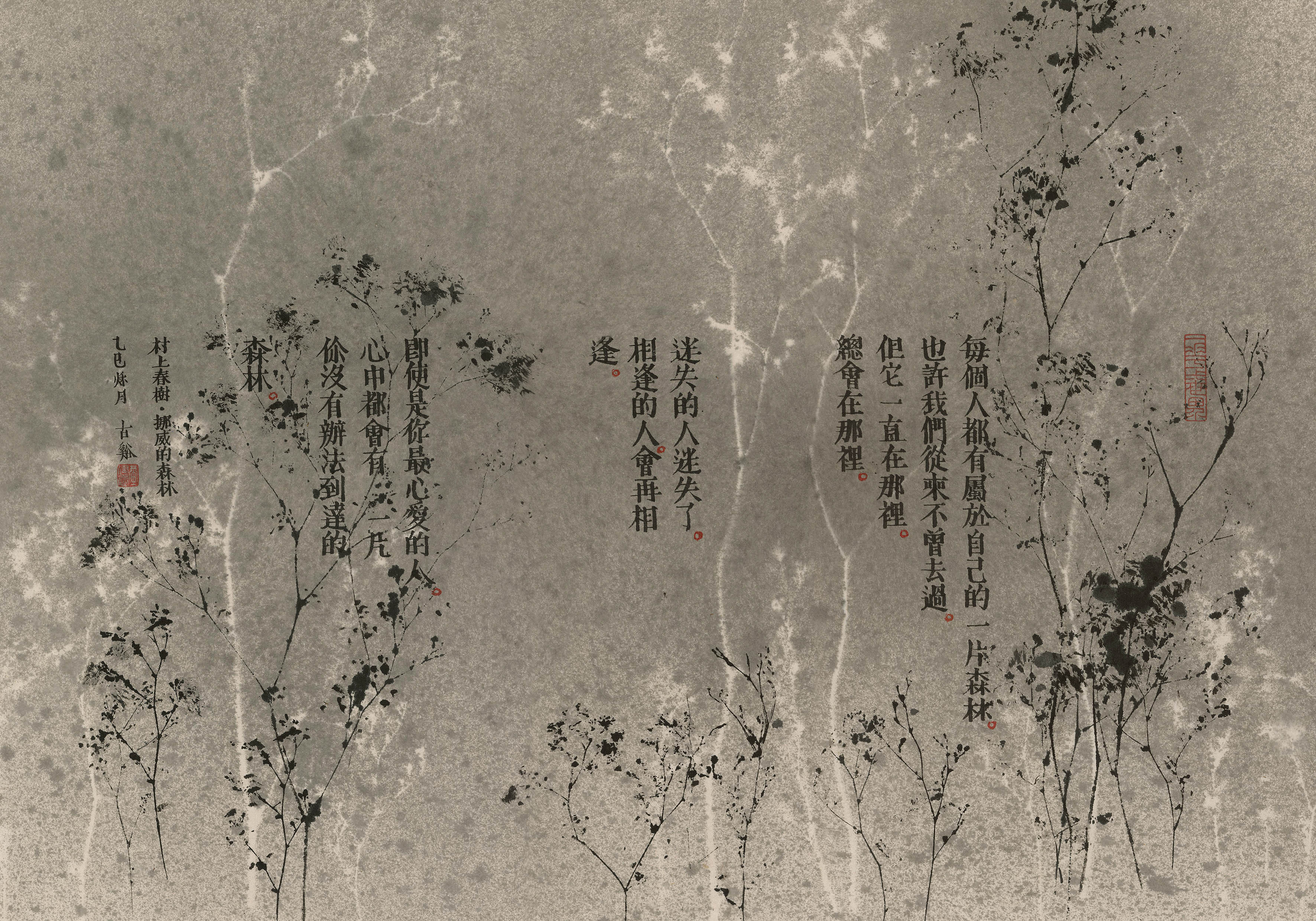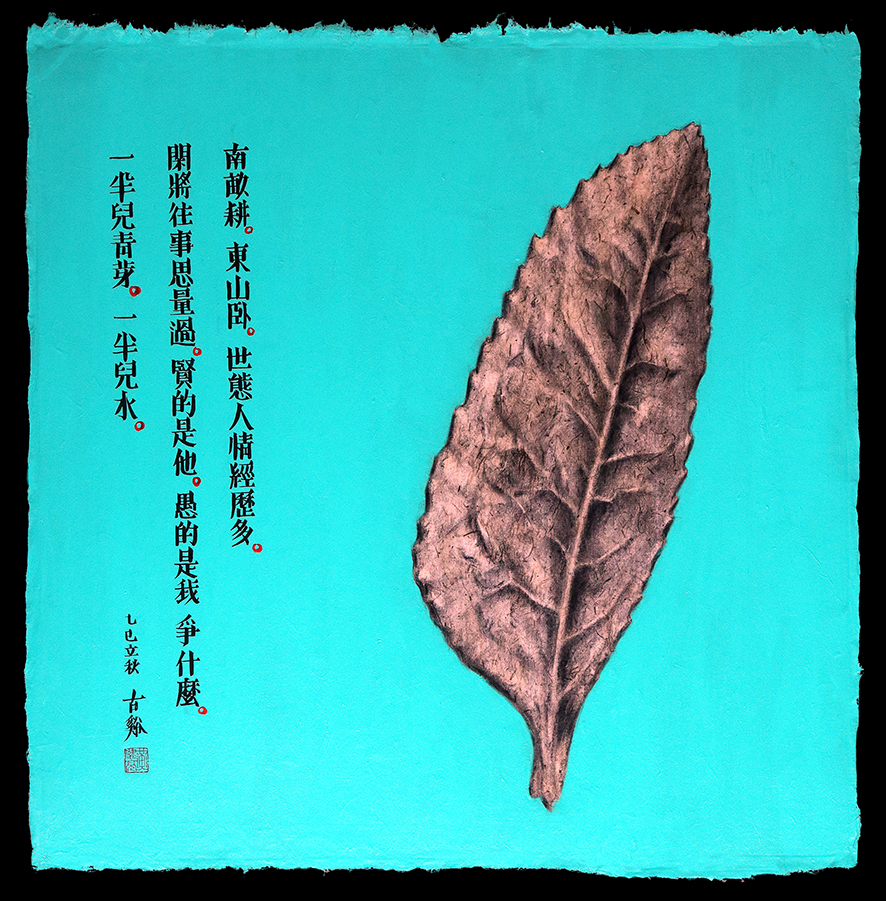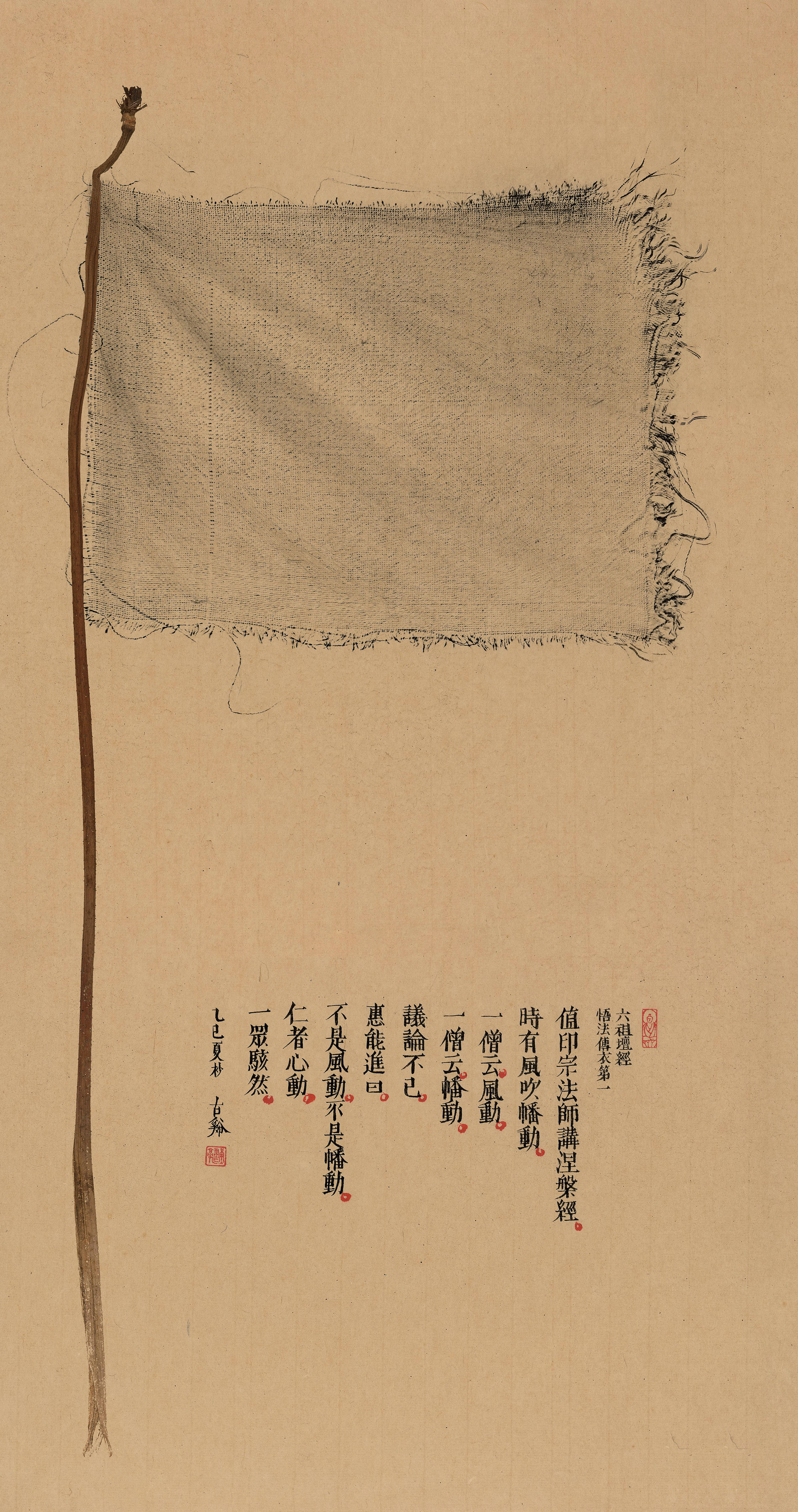【 六顆柿子:黃健亮的讀與寫 】
創作自述|黃健亮
南宋畫僧 牧溪 的《六柿圖》被認為是「禪畫」的代表作。禪宗不立文字,「六柿」或寓「六識」,即六種感官和心理活動的認知功能——眼識、耳識、鼻識、舌識、身識、意識,如此構成我們生命經驗的基本機制。
人過六十,其中五識——眼、耳、鼻、舌、身——漸歸渾沌,唯獨「意識」日趨清明。乃借用 牧溪《六柿圖》紀錄人生的幾個階段。自幼不擅讀書,但頗能享受漫讀雜句,且讀且畫的樂趣。前人的吉光片羽像是一顆多稜切割的鑽石,往往不經意間就照見自己的形影;而字裡行間有條細縫——
那是藝術靈光照進來的地方。
———
展覽簡介
在本次的「藝術家會客室」企劃中,異雲書屋很榮幸能為您呈現藝術家 黃健亮 的作品。由南宋畫僧 牧溪 的《六柿圖》為楔子,串起藝術家自青春年少至年過六十的生命軌跡——從早年青澀敏銳、壯年清醒自省,再到中年後的澄明與放下——借用柿子的變化,隱喻生命在不同階段的熟成。
無論是徐志摩的〈偶然〉、鄭愁予的〈錯誤〉,或者村上春樹〈挪威的森林〉、黃庭堅的〈花氣熏人帖〉,乃至董其昌〈骨董十三說〉、《六祖壇經》,黃健亮在讀與寫之中,構築自我的精神實踐,通達了內在、感知、記憶與時間,領略生命「欣於所遇,暫得於己,如此而已」之況味。當青澀褪盡,萬事回甘,他以枯殘蓮梗撐起一幡清風,藝術成為理解世界與自我的另一種清明。
———
關於藝術家|黃健亮
別署古谿,1963年生於嘉義。臺灣藝術大學藝術碩士。長期從事「茶與文人」研究與美學創作,相關出版著作甚豐,現為台北故宮藏品徵集評委。基於對傳統文人生活的深刻體會,作品以現代水墨形式,從文人視野出發,藉由古代雕版字書寫出傳統文學、生活美學的經典哲思,佐以古雅內斂的視覺圖像。在瞬息萬變的時代,汲古創新,展現慢生活中的吉光片羽,也折射出科技浪潮披沙瀝金之後的傳統餘暉,深遠內斂,令人發思古之幽情,咀嚼再三。
///
Artist Statement|Huang Chien-Liang
Muqi(牧溪), the Chan monk-painter of the Southern Song dynasty, created Six Persimmons, a work long regarded as a quintessential expression of Zen painting. Chan Buddhism teaches “no reliance on words,” and the six persimmons are said to symbolize the six consciousnesses—the perceptual and cognitive functions of sight, hearing, smell, taste, touch, and mind-consciousness—together forming the foundation of our lived experience.
Now past sixty, I find that five of these senses—sight, hearing, smell, taste, and touch—have grown indistinct, while the sixth, mind-consciousness, has become ever more lucid. Thus, I borrow Muqi’s Six Persimmons as a metaphor to trace the passages of my life.
I was never a diligent reader, yet I have always taken delight in wandering through fragments of text, savoring the pleasure of reading and painting in tandem. The luminous shards left by those before me are like facets of a many-cut diamond—each reflecting, at unexpected angles, a glimpse of my own shadow. And between the lines, there lies a narrow seam—
the very place where the light of art enters.
———
Exhibition Introduction|The Artist’s Parlor: Huang Chien-Liang
In this edition of The Artist’s Parlor, Yi Yun Art is honored to present the works of Huang Chien-Liang. Taking as its point of departure Six Persimmons by Muqi(牧溪), the Chan monk-painter of the Southern Song dynasty, the exhibition traces the artist’s journey from youth to his sixtieth year—a path from the sensitivity and ardor of early years, through the lucidity and introspection of maturity, to the serenity and release that arrive with time. Through the ripening of the persimmon, Huang finds a metaphor for the unfolding of life itself.
From Xu Zhimo(徐志摩)’s Chance and Zheng Chouyu(鄭愁予)’s Mistake, to Haruki Murakami(村上 春樹)’s Norwegian Wood, Huang Tingjian(黃庭堅)’s Fragrant Blossoms Overwhelm the Mind, Dong Qichang(董其昌)’s Thirteen Discourses on Antiquities, and even the Platform Sutra of the Sixth Patriarch, Huang’s creative practice is rooted in a lifelong dialogue between reading and writing. Within this process, he builds a spiritual discipline of his own—an inquiry that weaves together perception, memory, and time, revealing the quiet insight of “finding joy in what comes, and holding it only for a moment.”
As the sharpness of youth fades and the taste of life mellows, Huang raises a withered lotus stem against a passing breeze, letting art become another form of clarity—a way to understand both the world and oneself.
———
About the Artist|Huang Chien-Liang
Also known by the sobriquet Guqi, Huang Chien-Liang was born in Chiayi, Taiwan, in 1963. He holds a Master of Fine Arts from the National Taiwan University of Arts and has long devoted his practice to the study of tea and the literati, as well as to aesthetic creation rooted in that cultural lineage. His writings and publications on these subjects are extensive. Huang currently serves as a member of the Collection Review Committee at the National Palace Museum in Taipei.
Grounded in a profound understanding of traditional literati life, Huang’s works reinterpret classical ideals through the language of contemporary ink painting. Drawing from ancient woodblock characters and the philosophical depth of traditional literature and daily aesthetics, his art merges text and image with an elegance that is both erudite and restrained.
In an age defined by speed and transformation, Huang turns to the wisdom of the past as a wellspring of renewal. His practice captures fleeting moments of quiet brilliance within a slow, reflective life, revealing the lingering radiance of tradition amid the sifting tides of modernity—subtle, contemplative, and imbued with a timeless sense of grace.
.jpg)























